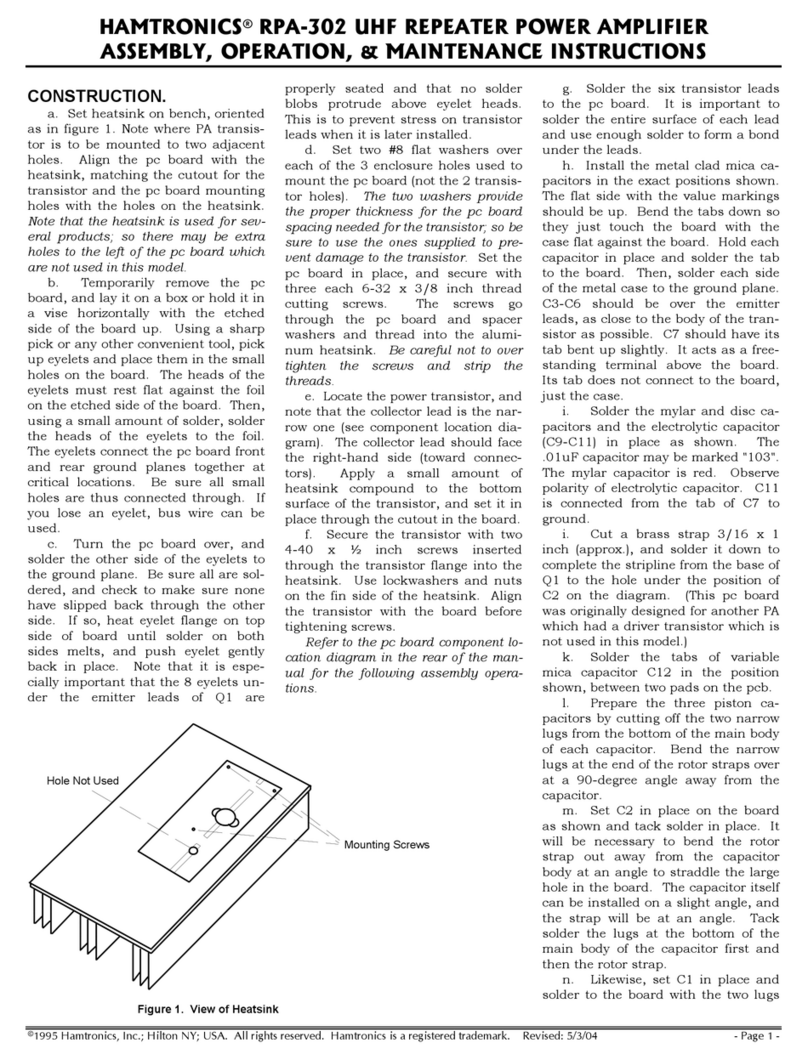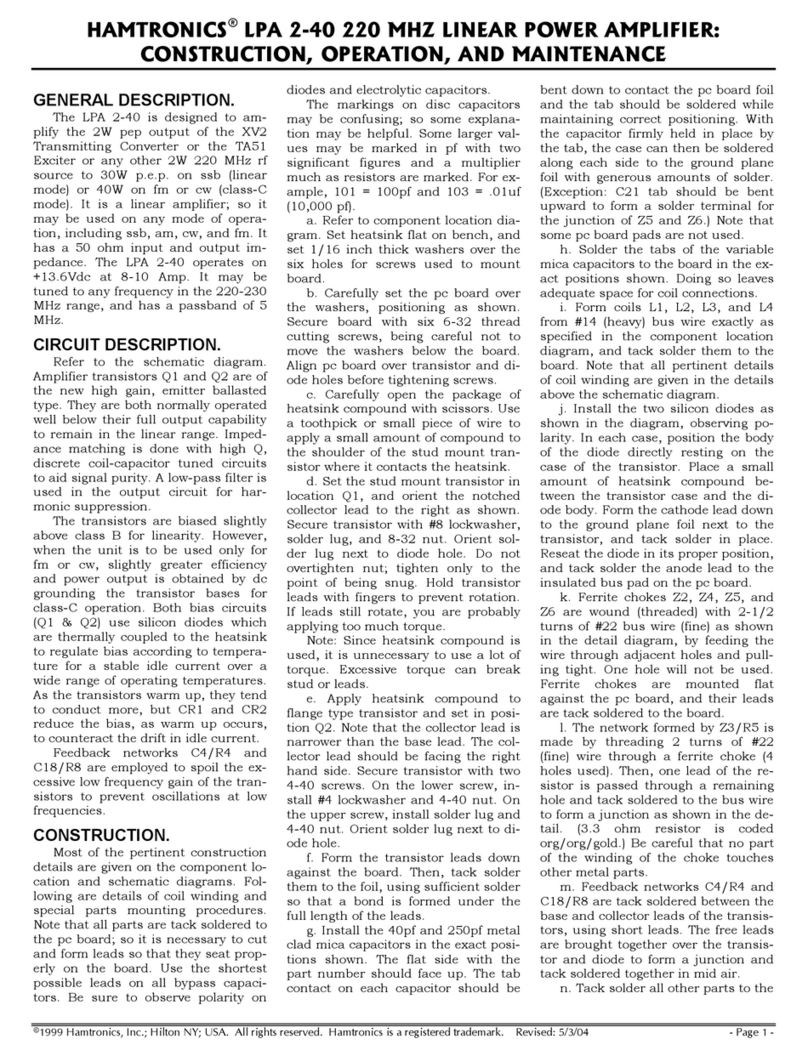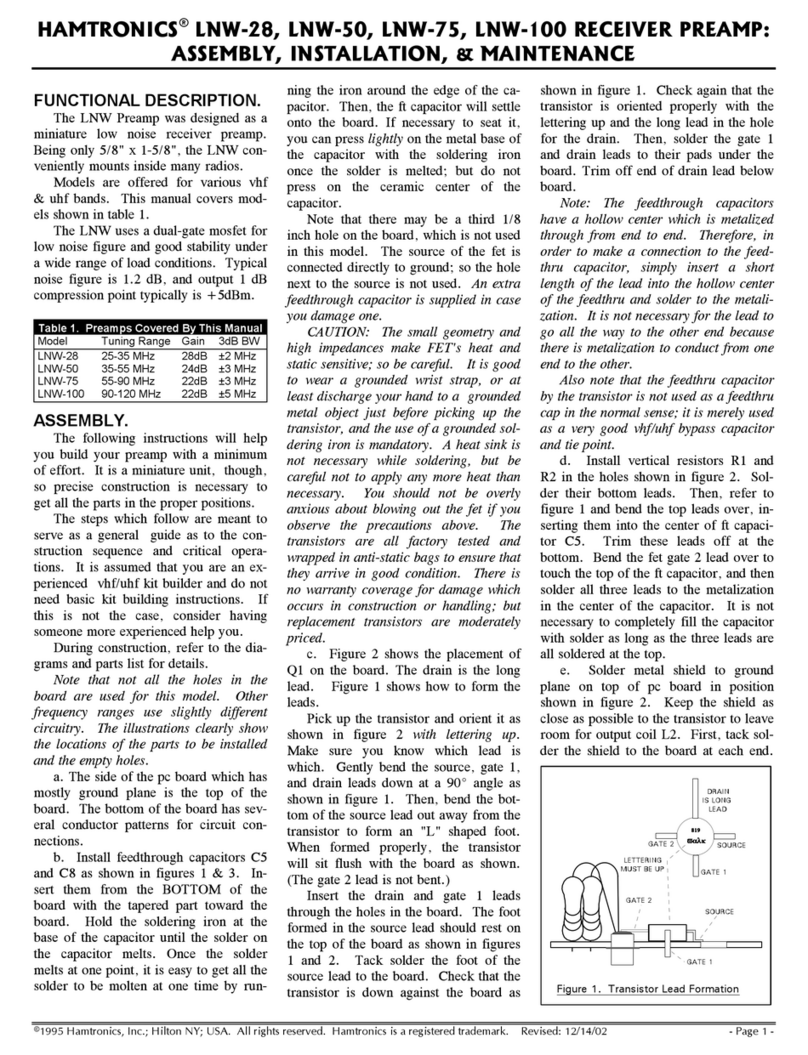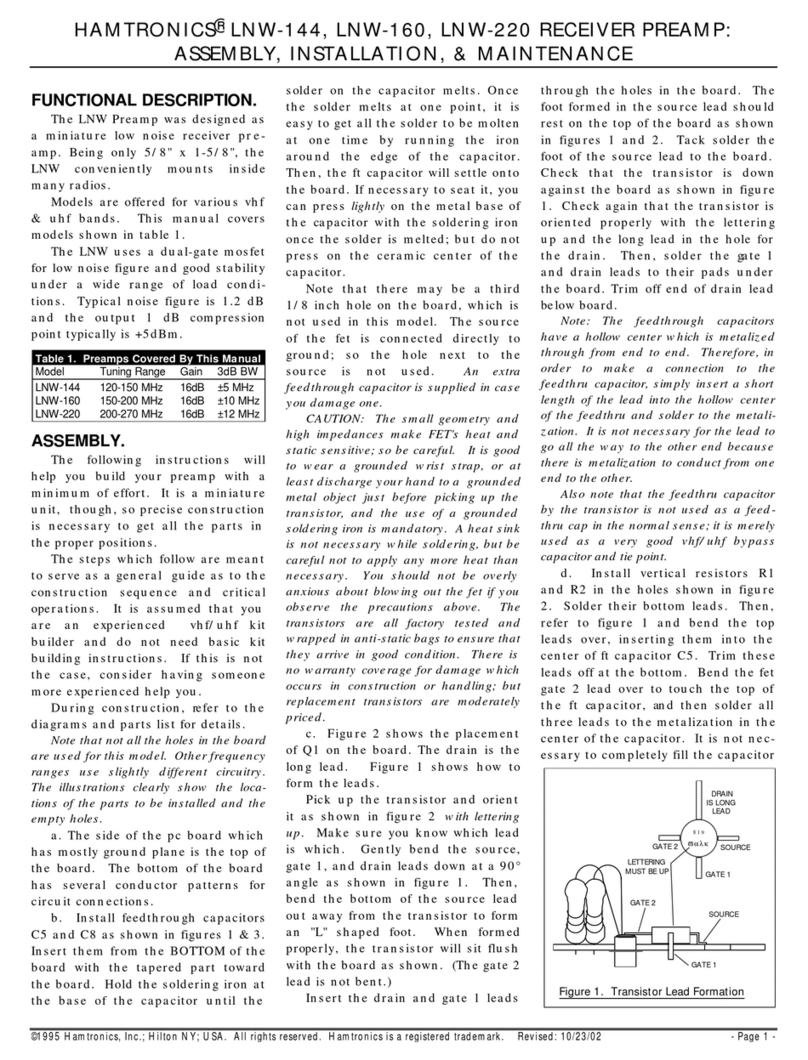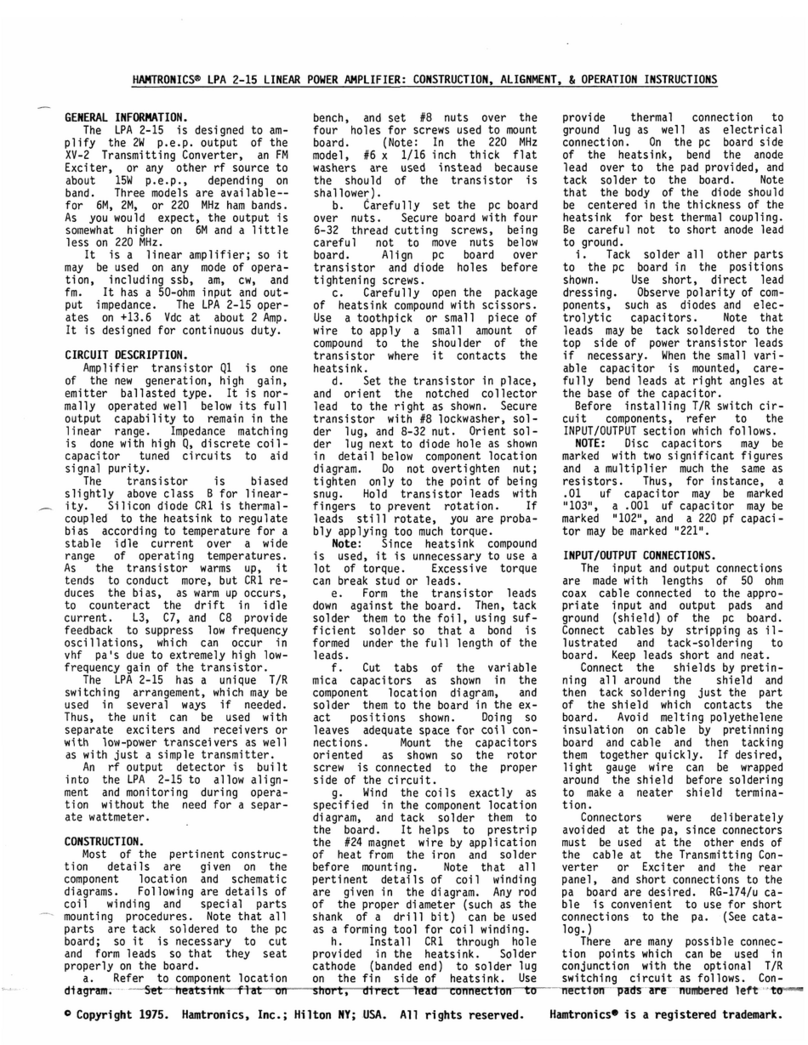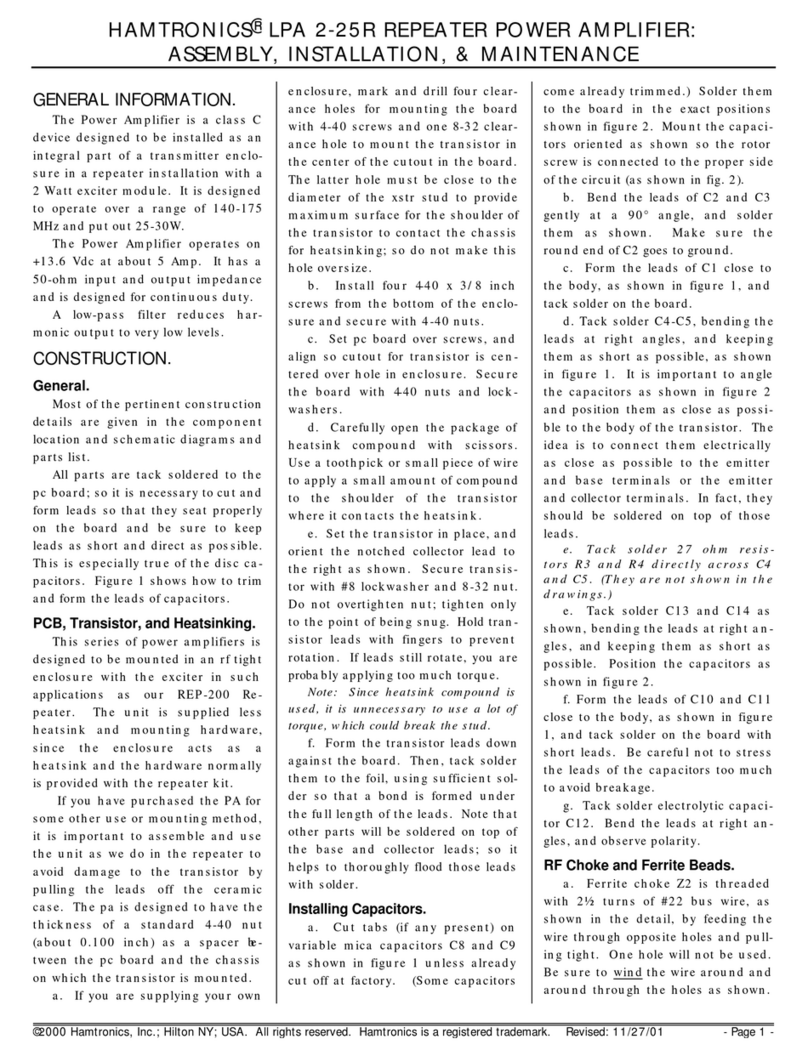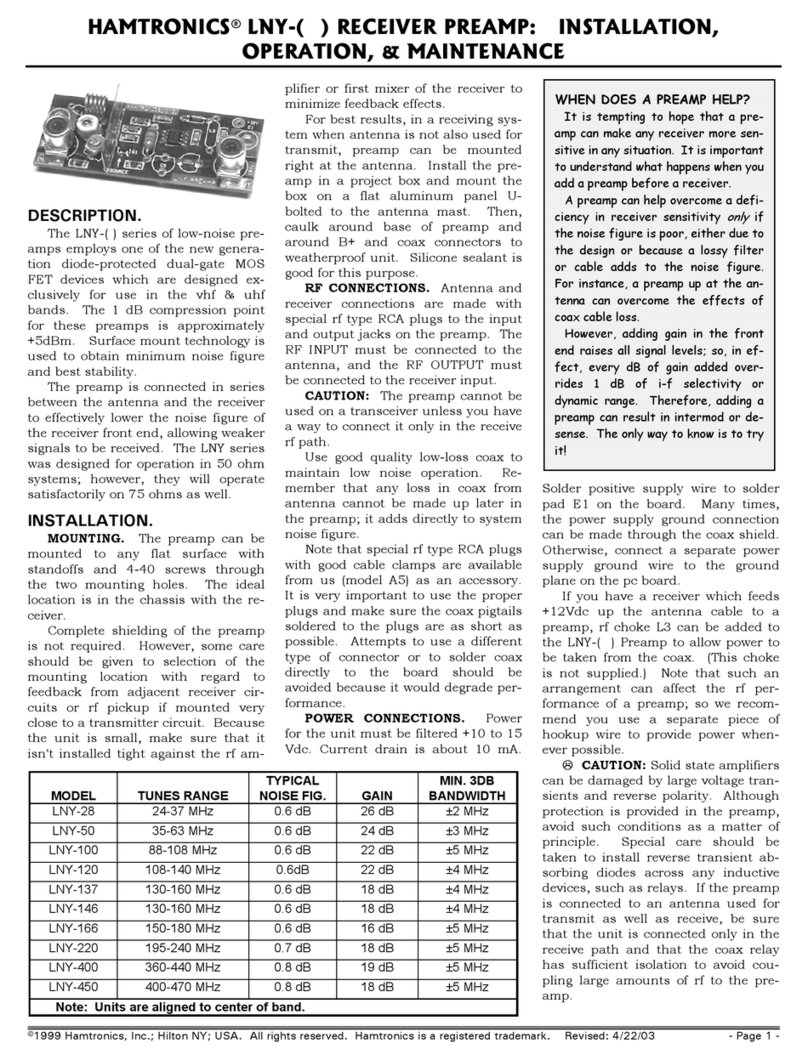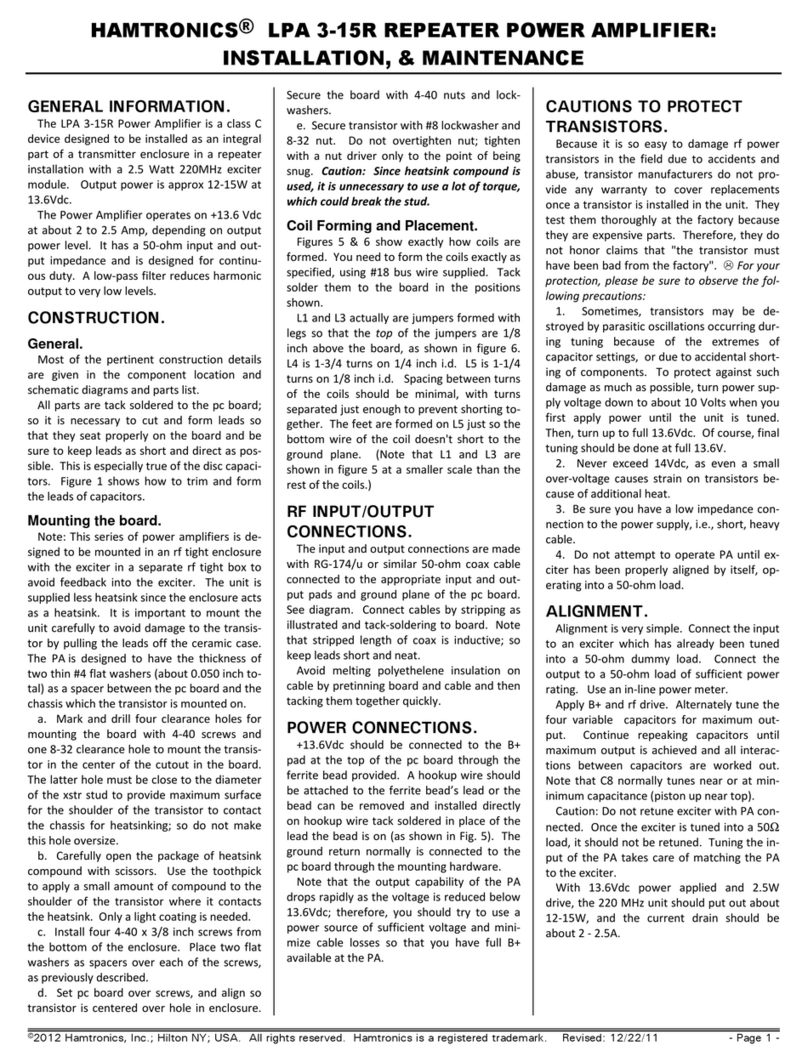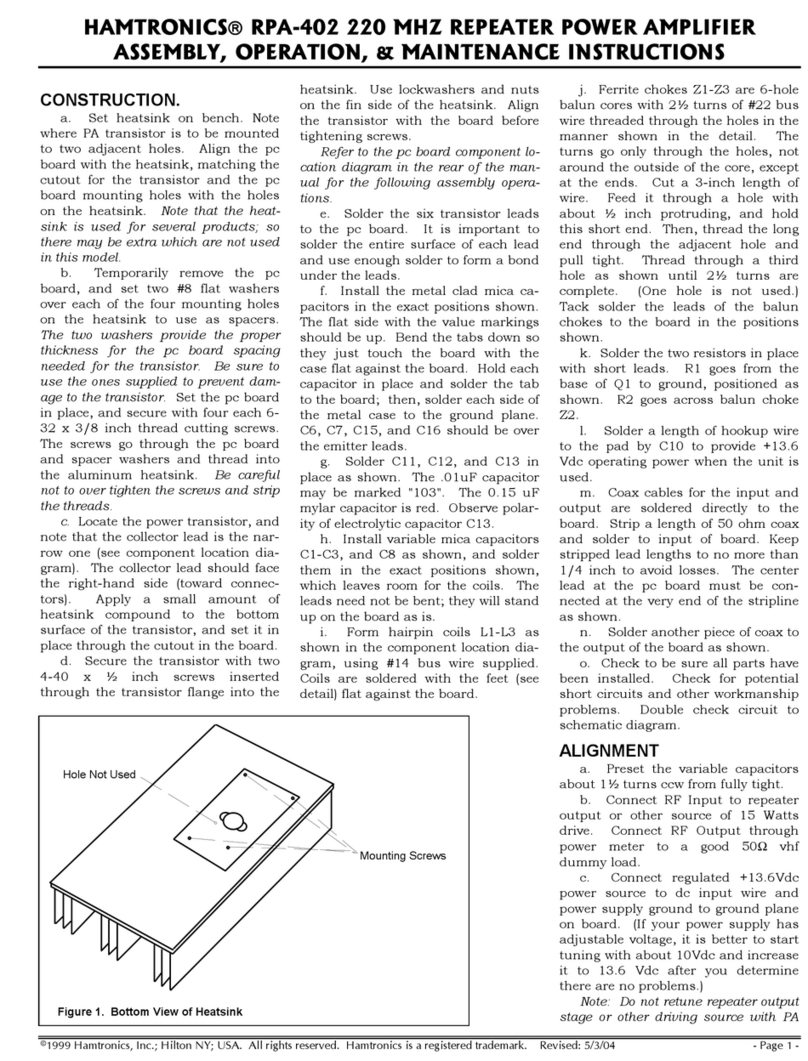
©1995 Hamtronics, Inc.; Hilton NY; USA. All rights reserved. Hamtronics is a registered trademark.
GENERAL INFORMATION.
The LPA 4-10R is designed to be
installed as an integral part of a
transmitter enclosure in a repeater
installation with a two Watt exciter
module. The transistor is biased for
class-C operation to give 8-10 Watts
output. The LPA 4-10R operates on
+13.6 Vdc at about 2 Amp. It has a
50-ohm input and output impedance
and is designed for continuous duty.
CONSTRUCTION.
Most of the pertinent construction
details are given in the component lo-
cation and schematic diagrams and
parts list. All parts are tack soldered
to the pc board; so it is necessary to
cut and form leads so that they seat
properly on the board and be sure to
keep leads as short and direct as pos-
sible.
Note: This series of power amplifiers
is designed to be mounted in an rf tight
enclosure with the exciter in such appli-
cations as our REP-200 Repeater or an
RF Tight box. The unit is supplied less
heatsink and mounting hardware, since
the enclosure acts as a heatsink and the
hardware normally is provided with the
repeater kit. If you have purchased the
PA for some other use or mounting
method, it is important to assemble and
use the unit as we do in the repeater to
avoid damage to the transistor by pull-
ing the leads off the ceramic case. The
LPA 4-10R is designed to have the
thickness of a standard #8 SAE flat
washer or two thin #4 flat washers
(about 0.050 inch total) as a spacer be-
tween the pc board and the chassis
which the transistor is mounted on.
a. If you are supplying your own
enclosure, mark and drill four clear-
ance holes for mounting the board
with 4-40 screws and one 8-32 clear-
ance hole to mount the transistor in
the center of the cutout in the board.
The latter hole must be close to the
diameter of the xstr stud to provide
maximum surface for the shoulder of
the transistor to contact the chassis
for heatsinking; so do not make this
hole oversize.
b. Install four 4-40 x 3/8 inch
screws from the bottom of the enclo-
sure. Place flatwashers as spacers
over the screws, as previously de-
scribed.
c. Set pc board over screws, and
align so cutout for transistor is cen-
tered over hole in enclosure. Secure
the board with 4-40 nuts and lock-
washers.
d. Carefully open the package of
heatsink compound with scissors.
Use a toothpick or small piece of wire
to apply a small amount of compound
to the shoulder of the transistor
where it contacts the heatsink.
e. Set the transistor in place, and
orient the notched collector lead to
the right as shown. Secure transistor
with #8 lockwasher and 8-32 nut. Do
not overtighten nut; tighten only to
the point of being snug. Hold transis-
tor leads with fingers to prevent rota-
tion. If leads still rotate, you are
probably applying too much torque.
Note: Since heatsink compound is
used, it is unnecessary to use a lot of
torque, which could break the stud.
f. Form the transistor leads down
against the board. Then, tack solder
them to the foil, using sufficient sol-
der so that a bond is formed under the
full length of the leads. Note that
other parts will be soldered on top of
the base and collector leads; so it
helps to thoroughly flood those leads
with solder.
g. Cut tabs of variable mica ca-
pacitor C6 and piston variable capaci-
tors C2, C3, C7, and C8 as shown in
the detail on the component location
diagram, and solder them to the board
in the exact positions shown. Doing
so leaves adequate space for coil con-
nections. Mount the capacitors ori-
ented as shown so the rotor screw is
connected to the proper side of the
circuit.
Note: There are two sizes of bus
wire in the kit: #22 is the finest and
#14 is the heaviest.
h. Ferrite choke Z2 is threaded
with 2-1/2 turns of #22 bus wire, as
shown in the detail, by feeding the
wire through opposite holes and pull-
ing tight. One hole will not be used.
Be sure to wind the wire as shown,
not in a zig-zag fashion. The choke is
mounted flat against the pc board, and
the leads are tack soldered to the
board.
i. Tack solder R2 across Z2 as
shown, being careful not to short to
turns on the choke.
j. Install chip capacitors as fol-
lows. Use small tweezers to handle
them. Be careful not to drop them; they
are difficult to find. Since they have no
markings, be sure to leave them in the
package until installed so you can tell
the values apart. Note where capaci-
tors are to be positioned. The chip
capacitors must straddle the area be-
tween the pad and the ground plane,
with one electrode soldered to each.
Apply a little solder to the pads ad-
jacent to the transistor leads where
one end of each capacitor will be posi-
tioned. Do not apply solder to the
ground plane yet.
Pick up one capacitor at a time.
Set the capacitor in place. Then,
heat the solder on the pc board pad,
and allow the solder to bond to the
electrode on the capacitor. When the
solder melts, the capacitor will seat
down on the board in the molten sol-
der. It is essential that this process
be done relatively quickly so the sol-
der doesn't oxidize and so there is still
a little flux left where the capacitor
electrode sits.
After one end of each of the ca-
pacitors is soldered and the positions
have been confirmed to be correct,
solder the ground plane end of each
capacitor.
k. Wind the coils exactly as speci-
fied in the component location dia-
gram, and tack solder them to the
board. Note that all pertinent details
of coil winding are given in the dia-
gram. Any rod of the proper diameter
(such as the shank of a drill bit) can
be used as a forming tool for coil wind-
ing.
HAMTRONICS® LPA 4-10R UHF REPEATER POWER AMPLIFIER
